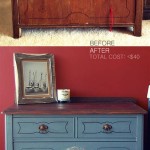How to Get Fleas Off of Furniture
Fleas are a common household pest, often brought into homes by pets. While pets are often the primary target of flea infestations, these insects can quickly spread and establish themselves in furniture, carpets, and other areas within a home. Eliminating fleas from furniture requires a multi-faceted approach, combining thorough cleaning, targeted treatments, and preventive measures.
Identifying Flea Infestation in Furniture
Before embarking on flea removal, it's crucial to confirm the presence of fleas in the furniture. Fleas are small, wingless insects, typically dark brown or reddish-brown in color. They are highly mobile, capable of jumping considerable distances. Adult fleas feed on blood and their bites can cause itching and irritation for both humans and animals. However, spotting adult fleas on furniture can be challenging as they are small and tend to hide in dark, protected spaces.
A more reliable method for identifying a flea infestation is to look for flea dirt, which is flea feces. Flea dirt appears as small, dark specks resembling ground pepper. It is typically found in areas where fleas congregate, such as seams, crevices, and under cushions. To confirm if the specks are indeed flea dirt, collect some of the material on a damp paper towel. If it dissolves and leaves a reddish-brown stain, it is likely flea dirt, indicating the presence of fleas. The reddish-brown stain is due to the digested blood in the flea feces.
Another sign of flea infestation is the presence of flea eggs. Flea eggs are small, white, and oval-shaped. They are often difficult to see with the naked eye. Flea eggs are not sticky and readily fall off the host animal, dispersing into the environment, including furniture. The presence of flea eggs further confirms the need for thorough flea removal measures.
Vacuuming Furniture Thoroughly
Vacuuming is a critical step in removing fleas from furniture. A thorough vacuuming removes adult fleas, flea eggs, flea larvae, and flea dirt. It is important to use a vacuum cleaner with a strong suction and to pay close attention to areas where fleas are likely to hide.
Prior to vacuuming, remove all cushions and loose items from the furniture. This allows access to the crevices and seams where fleas often reside. Use a crevice tool to reach into tight spaces and along the edges of the furniture. Vacuum all surfaces of the furniture, including the top, bottom, sides, and back. If possible, turn the furniture upside down to vacuum the underside.
Pay particular attention to upholstered furniture. Fleas can burrow deep into the fabric, making it crucial to vacuum thoroughly. Use an upholstery attachment to agitate the fibers and dislodge any fleas or flea eggs. Overlap each vacuum pass to ensure complete coverage. After vacuuming the furniture itself, vacuum the surrounding area, including the floor, baseboards, and any nearby carpets or rugs. This helps to prevent fleas from simply moving to another location.
Once vacuuming is complete, immediately dispose of the vacuum cleaner bag or empty the canister. Seal the bag or canister in a plastic bag before discarding it in an outdoor trash receptacle. This prevents the fleas from escaping and re-infesting the home. Regular vacuuming, even after the initial flea treatment, is essential for preventing future infestations.
Treating Furniture with Insecticides
After vacuuming, insecticide treatments can be applied to furniture to kill any remaining fleas. Several types of insecticides are effective for flea control, including sprays, powders, and foams. It is crucial to select a product that is specifically labeled for use on furniture and to follow the manufacturer's instructions carefully.
Before applying any insecticide, test it on a small, inconspicuous area of the furniture to ensure that it does not cause discoloration or damage. Wear protective clothing, such as gloves and a mask, when applying insecticides. Ensure that the area is well-ventilated to minimize exposure to fumes.
Insecticide sprays are a common choice for treating furniture. Apply the spray evenly over all surfaces of the furniture, paying particular attention to seams, crevices, and under cushions. Avoid oversaturating the fabric, as this can lead to staining or damage. Allow the spray to dry completely before allowing pets or humans to come into contact with the treated furniture.
Insecticide powders, such as diatomaceous earth, can also be effective for flea control. Diatomaceous earth is a natural powder made from the fossilized remains of diatoms. It works by dehydrating insects, causing them to die. Apply a thin layer of diatomaceous earth to furniture, focusing on areas where fleas are likely to hide. Allow the powder to sit for several hours or overnight before vacuuming it up. Food-grade diatomaceous earth should be used; pool-grade diatomaceous earth is harmful if ingested.
Insect growth regulators (IGRs) are another type of insecticide that can be used to control fleas. IGRs work by disrupting the development of flea larvae, preventing them from maturing into adult fleas. IGRs are often combined with adulticides to provide comprehensive flea control. They are available in various formulations, including sprays and foggers. When using foggers, ensure all people and pets are out of the room for the time period specified on the product label.
When selecting an insecticide, consider the safety of pets and children. Choose products that are labeled as pet-friendly and follow the instructions carefully to minimize the risk of exposure. Some insecticides can be harmful if ingested or inhaled, so it's essential to take precautions during application.
Incorporating Natural Flea Repellents
In addition to insecticides, natural flea repellents can be used to help control flea infestations in furniture. These natural remedies may not be as effective as chemical treatments, but they can provide a safe and eco-friendly alternative, or be used in conjunction with other methods.
Lemon is a natural flea repellent. To use lemon as a flea control agent, slice a lemon and place it in a pot of water. Bring the water to a boil and then simmer for several hours. Allow the lemon-infused water to cool and then transfer it to a spray bottle. Spray the lemon water onto furniture, paying particular attention to areas where fleas are likely to hide. The citric acid in the lemon acts as a natural repellent.
Cedar is another natural flea repellent. Cedarwood oil can be diluted with water and sprayed onto furniture. Cedar chips can also be placed under cushions or in drawers to repel fleas. The scent of cedar is unpleasant to fleas, making it an effective deterrent.
Essential oils, such as lavender, peppermint, and eucalyptus, can also be used as flea repellents. Dilute a few drops of essential oil with water and spray it onto furniture. Be cautious when using essential oils around pets, as some oils can be toxic to animals so research before application. Always test the diluted oil on a small, inconspicuous area first.
Neem oil is another natural insecticide and repellent. It can be mixed with water and sprayed onto furniture to kill fleas and prevent them from returning. Neem oil is safe for humans and pets, but some individuals may be sensitive to it, so patch test first.
Preventive Measures for Flea Control
Preventing flea infestations is often easier than eliminating them. Regular cleaning, pet care, and environmental control can help to minimize the risk of fleas in the home and on furniture.
Regularly vacuuming furniture, carpets, and floors is essential for preventing flea infestations. Vacuuming removes flea eggs, larvae, and pupae before they can develop into adult fleas. Wash pet bedding frequently in hot water to kill any fleas or flea eggs that may be present. Groom pets regularly to remove fleas and flea dirt. Consult with a veterinarian about appropriate flea control products for pets, such as topical treatments, oral medications, or flea collars.
Maintain the yard by mowing the lawn regularly and removing piles of leaves or debris where fleas can breed. Treat the yard with an insecticide if necessary, paying attention to areas where pets spend time. Seal any cracks or crevices in the foundation of the home to prevent fleas from entering. Regularly inspect furniture and other areas of the home for signs of flea infestation.
By implementing these preventive measures, it is possible to significantly reduce the risk of fleas in the home and on furniture. Early detection and prompt treatment are key to controlling flea infestations and preventing them from becoming a major problem.

4 Ways To Kill Fleas In A Home Wikihow

How To Get Fleas Out Of Your Furniture And Carpets

How To Remove Fleas From Wooden Floors Wood And Beyond Blog

Can Fleas Live In Leather Furniture Second Hand Perabot Terpakai Skudai Johor Jb Malaysia

How To Get Rid Of Fleas At Home

14 Effective Ways To Get Rid Of Fleas In The House Fast

Getting Rid Of Fleas In Furniture Stopping Flea Bites

Pixie1999 Pixie199979 S Videos With Original Sound Tiktok

How To Get Rid Of Fleas At Home 8 Easy Tips Pestline

How To Get Rid Of Fleas In Your Carpet Full Expert Guide








